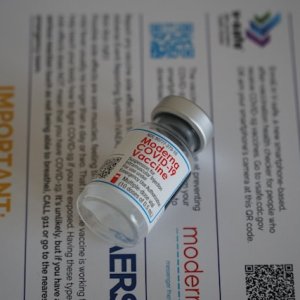Value-Based Model an Alternative for the Mexican Health System

STORY INLINE POST
Q: Why is value-based healthcare the right model for Mexico to deliver and improve health?
A: Improving the health of the general population is not only about bringing innovations that offer better efficacy and/or safety but also about fulfilling patients' expectations and improving other variables, such as people's quality of life or work productivity. For this to become a reality, the patient has to be at the center of what the public healthcare system does.
The purpose of the value-based health model, which is based on the patient and the value that the system can provide them, is rooted in this. This model was born out of a study carried out in the US that concluded that the health system should have three goals: to achieve better health outcomes, to provide a better patient experience from start to finish and, finally, to work toward a reduction in costs. By improving care, patients adhere to procedures and costs are reduced as a result.
Q: What is needed to deploy the value-based health model in Mexico?
A: It has to do with the alignment of all stakeholders’ incentives in the healthcare ecosystem. In Mexico, there are financers including the public social security schemes (IMSSS, ISSSTE, PEMEX, SEDENA/SEMAR, ISSSEMyN) and the private health insurers with different levels of vertical integration with their networks. There are also providers, which include healthcare professionals (HCPs) and healthcare organizations (HCOs), such as hospitals and clinics that are usually paid based on the services rendered. Finally, there are patients that contribute to their premiums via payroll taxes or employer/employee contributions. We think the system should be driven by incentives aligned to improve health outcomes. Those who deliver the best results can be rewarded financially or with a reputation ranking, for example.
Q: How is Mexico encouraging this innovative healthcare model and how can the country adapt to it?
A: In Mexico, there are two main groups within the health system, one that is financed with public resources and one that is financed with private resources. The latter is usually a supplementary or complementary insurance on top of the benefits granted by social security. Having said that, in the private sector, we can already see different examples of how systems reward the level of care provided by hospitals or insurers. People with private insurance usually have faster access to innovative medicines which translates into better health outcomes and quality of life.
The Mexican health system is extremely fragmented. There are, for example, 50 million people with social security, including private employees (IMSSS), federal employees (ISSSTE) and overlaps between these two sub-systems with an insurance scheme for informal workers (INSABI). But there is also health insurance at the state level and then there are also national systems that affiliate people with certain occupations, such as employees of PEMEX or the Armed Forces. Each of these groups has different benefits and services and this does not allow the system to be homogeneous. Out-of-pocket expenditure in Mexico at around 40 percent is the highest in Latin America because many people, despite having health insurance, sometimes for need or opportunity decide to pay at the point of service to avoid long waiting times.
As the public sector contracts more services with the private sector, for instance, the limited capacity or lack of geographic coverage, this model may begin to grow in the medium and long term as payments move form volume to value. The next step would be the implementation of pilot tests in those sub-systems. These base on four pillars; appropriate IT infrastructure to measure outcomes and track costs, quality metrics, financial incentives and healthcare delivery integration across the patient journey. A legal mechanism is also needed to move forward with these types of initiatives in the public sector.
Q: What medical specialties would benefit the most from the application of these models?
A: These models have been developed mainly for high-cost areas such as oncology or rare diseases. However, this model has also been applied to high-prevalence conditions, such as chronic diseases including diabetes, hypertension, dyslipidemias and chronic obstructive pulmonary disease (COPD).
Merck & Co, known as MSD outside the US and Canada, is a US-headquartered pharmaceutical company and the seventh-largest in the world by revenue. The company focuses on research on HIV, diabetes, oncology and vaccination.








 By Andrea Villar | Editorial Manager -
Mon, 02/15/2021 - 10:26
By Andrea Villar | Editorial Manager -
Mon, 02/15/2021 - 10:26
















